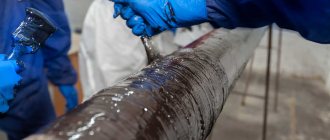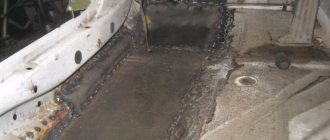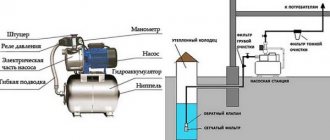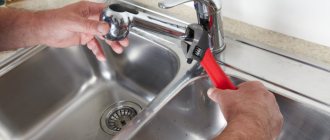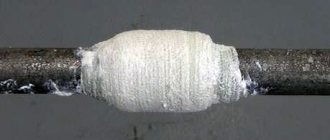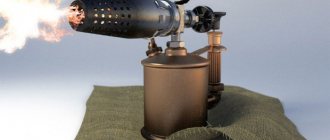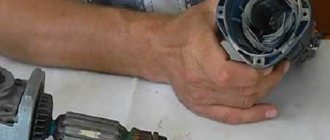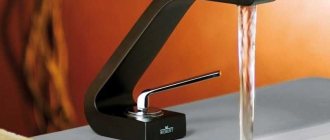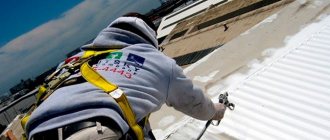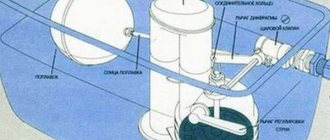The radiator does not last forever and can leak, usually at the wrong time. However, this does not mean that you need to urgently contact a car repair shop. If the antifreeze leak is insignificant, it is enough to seal it with cold welding for the radiator. Then repairing the car engine cooling system will be cheaper and faster. And when you have free time, do it thoroughly.
Broken radiator
- Mechanical damage received during an accident or from a stone flying out from under the wheels of the car in front. Sometimes an inexperienced amateur accidentally causes damage when servicing a radiator with his own hands.
- Violation of operating rules is not only failure to comply with the schedule for cleaning and flushing the cooling system. The use of low-quality antifreeze, which freezes in slight frost, which contributes to the appearance of cracks. If its composition contains aggressive substances, they will corrode the metal over time.
- Natural wear and tear occurs due to metal corrosion, then the radiator cannot be repaired, it will have to be replaced.
- Leak in the tubes through which coolant enters the radiator.
- Cracks in radiator pipes.
- Leaks in seals can be eliminated without welding by simply replacing them.
- Clogged tubes.
Sometimes the result of poor cooling is a thick layer of dirt on the radiator, preventing efficient heat dissipation. The situation can be corrected by simply washing with a hose. Damage can be repaired by welding or soldering, and small cracks can be repaired with special compounds.
Determining the location of the radiator leak for repair
The first sign of a leak is a decrease in the level of antifreeze in the tank and rapid heating of the engine, which will be reported by the temperature sensor. To check, you need to open the hood and carefully inspect the radiator. If there are traces of antifreeze on it or under it, it’s time to start repairing.
To find the location of the damage, you must first drain the coolant, then the radiator is removed and washed. After this, one of two methods is used:
- The holes on the radiator are plugged (for example, with wooden plugs), except for one. Water is poured through it, and pressure is created using a pump or compressor (a device for inflating tires). A stream of water will flow through the damage.
- After plugging all the holes, the radiator is immersed in a bath of water. Air bubbles will begin to escape through the damage site. If they are not there, the compressor creates excess pressure.
Repair technology
If cold welding is selected correctly, taking into account the above factors, it is possible to repair the radiator in a car. This procedure is carried out in two significant stages - preparatory and main.
Preparatory work
The preparatory stage consists of several steps:
- The first step is to determine the location of the leak . In the event that it is possible to carry out repairs without removing the radiator itself, the period immediately begins to prepare the radiator for repair. If it is not possible to eliminate the leak without removing it, it is necessary to dismantle it;
- The next step is to clean the area to be repaired . It is necessary to wash the area of potential repair, and then mechanically clean it from any remaining dirt (if any). Such preparatory work is necessary in order to exclude contact of the coldest weld with dirt, otherwise the quality of the welding performed will significantly decrease, and there is also a high risk of poor-quality connection of the weld itself with the repaired area, as a result of which the fragility of such repairs is possible;
- mandatory degreasing of the area being repaired . This is necessary due to the fact that there should be no foreign impurities between the cold welding and the metal that could negatively affect the quality of the repair performed. Either special chemical compounds or any alcohol-containing liquids can be used as a degreaser;
- The final stage is the preparation of the adhesive composition itself . One-component compositions are presented in the form of a rod, which is divided into parts and prepared for further use. In the case of a one-component composition, it is necessary to cut off a fragment from the existing rod, the size of which will be sufficient to carry out repairs in a specific place, and then heat the fragment until it reaches the state of a plastic mass. If we are talking about a two-component composition, it is necessary to mix its two parts in equal proportions until a plastic composition is obtained.
Main stage
The next stage is the main one. This is where the radiator section with a leak is directly repaired. It is necessary to carry out such repairs as quickly as possible, since the composition very quickly loses its plastic properties. Repair is carried out by applying cold welding to the area where the leak needs to be repaired. After the composition has been applied, it may be necessary to apply a special tourniquet or clamp to prevent contact of the composition with the environment until complete polymerization. However, in cases where it is not possible to apply a clamp, it is necessary to isolate the repair site from environmental influences in any available way, since, otherwise, the quality of the repair performed may suffer significantly.
Removal of a harness, clamp or other insulating material can be carried out no earlier than eight hours after the repair is completed. However, in order for the repair site to receive its maximum strength, it is necessary to withstand the time specified in the instructions for the specific adhesive composition.
The radiator will become fully operational no earlier than twenty-four hours later, when the cold welding adhesive has completely hardened, allowing water or other chemical coolants to be poured into the radiator itself.
Argon arc technology
Argon welding is used to repair tanks with fairly thick walls. An attempt to weld damage to honeycombs with a metal thickness of 0.3 mm can lead to its increase. However, a high-class specialist sometimes manages to successfully cope with this task.
Argon arc welding of a car radiator
To weld aluminum radiators, filler rods made of the same material and non-consumable electrodes are used to create an arc. To prevent oxides formed from the interaction of aluminum with atmospheric oxygen and splashing from interfering with the process, it is produced in an argon environment. To weld a car radiator from copper, an appropriate rod is used for the additive.
Of all the repair methods, welding in an argon environment is the most reliable. The strength of the seams created is not inferior to the factory one. However, for this you will have to contact a car service, since using this technology at home without special equipment and experience is impossible.
Where to contact?
This unit costs a lot of money, but the problem can be solved by ordering the repair of car radiators in Moscow from a car service center with a good reputation. This is exactly what M.B.S. is! We have experienced technicians who have successfully repaired hundreds of cars. They will carry out all the necessary work, and your car’s radiator will be like new again, and you will save a significant amount.
radiator repairs from us :
- passenger cars;
- trucks;
- motorcycles (motor radiators).
We are equally successful in repairing aluminum radiators , assemblies made of brass and copper. We have the necessary equipment and tools for prompt repair of truck radiators .
Repair by soldering
This method is considered the most reliable for self-repair. Depending on what material the radiator is made of, different technologies are used.
Soldering a car radiator
Copper and its alloys
To eliminate damage, you will need a regular soldering iron with a power of at least 100 W or a hatchet with a power of 300 W. An option heated by an open fire is also suitable, and if you have a compact gas burner, you can do without them. You also need to stock up on solder, flux or soldering acid.
Dirt from the damage is removed with a stiff brush and sanded with sandpaper until shiny. Degrease with acetone. After heating with a soldering iron and applying flux, pieces of solder are placed on it. They are heated until they spread over the surface.
A small hole in the radiator is covered with solder, and a large hole is closed with a patch. It is cut from the same material as the radiator. After sanding, one side is coated with solder. After applying the patch to the prepared area of damage, it is heated so that the layers of solder are soldered.
Repair of aluminum radiators
To solder this material, you will need a special flux, which is prepared from two parts of rosin and one part of iron filings. The prepared ingredients are heated to a liquid state, mixed, and cooled. To seal small cracks, ordinary solder will do, but to repair extensive damage to a car radiator, it is better to use a variety with the addition of bismuth. It is sold in radio stores under the name POSV-50 or 55 in the form of wire.
Benefits of use
Car radiators are most often made of copper. However, this metal is quite complicated in terms of carrying out repairs using traditional welding, since it requires special skills when carrying out repairs due to the peculiarities of the chemical composition of such metal. If we talk about cold welding, then its use does not require any special features when carrying out repairs of various products.
Another advantage that should be taken into account when carrying out repairs using cold welding of car radiators is that such repairs can be carried out in a fairly short time, which, as a rule, will allow further operation of the car within eight hours after such repairs have been completed.
The repair itself takes a limited time, since cold welding needs to be done very quickly due to the rapid polymerization of the adhesive.
Application of cold welding
Cold welding for car radiator
This product should be in the repair kit of every motorist going on a long trip, since it can be used to eliminate even large leaks in “field” conditions. Cold welding means a fast-hardening adhesive that does not interact with petroleum-derived products. It is available in liquid and plastic form. The first option is based on epoxy resin and hardener. The second is a special putty with a consistency similar to plasticine in the form of two and single-layer bars. Motorists often use the plastic type, but when increased strength is required, it is preferable to use a liquid composition.
To seal a radiator with cold welding you need to:
- Clean the metal with sandpaper. In field conditions, this operation can be skipped, but due to the scratches left by the sandpaper, the glue will last longer.
- For degreasing, you can use gasoline if you don’t have acetone on hand.
- Prepare cold welding for use. The required volume is squeezed out of the tube or cut from a bar, mixed or kneaded until a homogeneous mass is formed.
- The prepared glue is applied to the damaged area and leveled. The operation is performed as quickly as possible, since depending on the composition, a few minutes are enough for setting.
- After repairing the damage, it is advisable to wait for complete hardening, from 1 to 24 hours. If you don’t have time for this, after 20 minutes you can start moving to the nearest car service center.
Repairing radiator breakdowns
In order to eliminate the radiator leak, argon arc welding is used. It is very important to turn to professionals, because independent experiments can lead to consequences that will be impossible to correct and the part will have to be replaced. It is not recommended to use cold welding, which is extremely unreliable, and the price of professional services after its use will only increase, since in order to carry out repair work, you will first have to eliminate the consequences of such experiments.
Our craftsmen will dismantle the radiator, diagnose it, clean it and degrease it, followed by welding at a professional level. After the work is completed, the radiator will be checked for leaks.
Consultations, diagnostics, repair and welding of radiators - all this can be ordered from M.B.S.!
What is argon used for?
Welding aluminum is not easy. The main difficulty is the dense oxide film on the metal surface. The melting point of the film is 2000 °C, which is significantly higher than the melting point of aluminum, which does not exceed 660 °C.
The creation of an inert gas environment - argon - around the welding site is necessary to prevent the re-formation of a previously destroyed oxide film upon contact with oxygen. The absence of film ensures the strength and tightness of the seam. Argon also protects against hot cracks in the metal.
Air conditioner radiator repair
An air conditioner radiator can break down for a variety of reasons. Often, the radiator breaks due to mechanical damage or because the device was not cleaned in a timely manner and care was not taken. The radiator is most often made of aluminum - since the heat transfer of this metal is high. However, aluminum is very sensitive to reagents. Corrosion leads to the destruction of the metal of the air conditioner radiator: it crumbles. In order to extend the life of the condenser, it must be periodically inspected and washed.
Causes of damage and repair options
During operation, the radiator material is subject to thermal deformation, so fatigue cracks may form on it. In addition, leakage occurs for the following reasons:
- Mechanical damage received during an accident or from a stone flying out from under the wheels of the car in front. Sometimes an inexperienced amateur accidentally causes damage when servicing a radiator with his own hands.
- Violation of operating rules is not only failure to comply with the schedule for cleaning and flushing the cooling system. The use of low-quality antifreeze, which freezes in slight frost, which contributes to the appearance of cracks. If its composition contains aggressive substances, they will corrode the metal over time.
- Natural wear and tear occurs due to metal corrosion, then the radiator cannot be repaired, it will have to be replaced.
- Leak in the tubes through which coolant enters the radiator.
- Cracks in radiator pipes.
- Leaks in seals can be eliminated without welding by simply replacing them.
- Clogged tubes.
Sometimes the result of poor cooling is a thick layer of dirt on the radiator, preventing efficient heat dissipation. The situation can be corrected by simply washing with a hose. Damage can be repaired by welding or soldering, and small cracks can be repaired with special compounds.
Why do they come to us?
The engine cooling system of a car is one of the key units to ensure the performance of the car. If it fails, further work with the engine running is prohibited. If it overheats, the car owner will face serious problems with repairing the main unit itself. Therefore, the cooling system and its individual components must be repaired immediately if any malfunctions are detected. By providing high-quality and inexpensive repair services, we provide our customers with the opportunity to restore the lost functionality of units after an accident and other unforeseen mechanical impacts.
The simplest and most effective way to solve the problem is to completely replace the failed cooling system. But this is often impractical due to high costs. In addition, restoring a brand-name radiator eliminates the issue of finding exactly the same model in the shortest possible time. Highly qualified repair work comes first in our service.
Advantages of using argon welding
The demand for this technique is explained by the fact that during the welding of parts, a gas shell is formed that protects the weld pool and filler material from exposure to oxygen. This technology eliminates the formation of oxides on the weld surface. Argon welding services in Balashikha are used to join aluminum, gold, copper, silver, stainless steel, and titanium. The technology has the following advantages:
- The resulting welds are free of foreign impurities and pores;
- The ability to connect metals that cannot be bonded by other methods;
- The high temperature of the arc ensures the speed of the procedure, resulting in efficiency and economy;
- The result is a seam with a uniform melting depth;
- Strength and reliability of the connection.
However, the procedure for welding elements with argon has disadvantages - the task requires complex equipment and appropriate experience to properly configure and use the device.
Myguru service masters have everything they need to solve problems, regardless of complexity. The services are turnkey – we weld even difficult-to-weld elements.
What does the cost depend on?
The price for 1 cm of argon welding in Balashikha depends on the following factors:
- Type of material being welded (titanium or aluminum will cost more than working with stainless steel);
- The need for subsequent processing of the seam;
- Thickness of the metal being welded;
- The procedure is performed in the welder’s workshop or on site;
- Scope of work to be done;
- Spatial localization of the connection, complexity of formation, accessibility to it.

